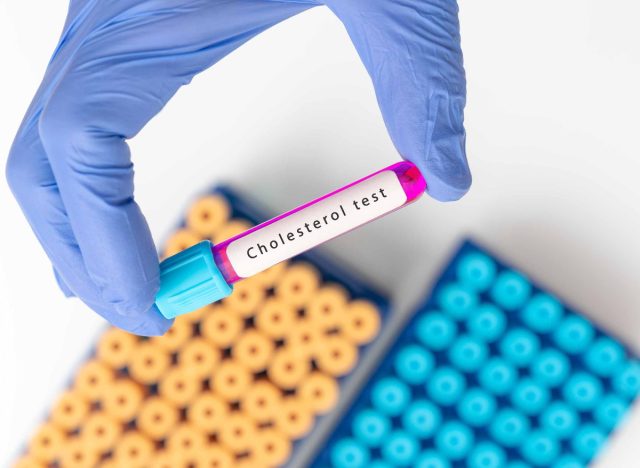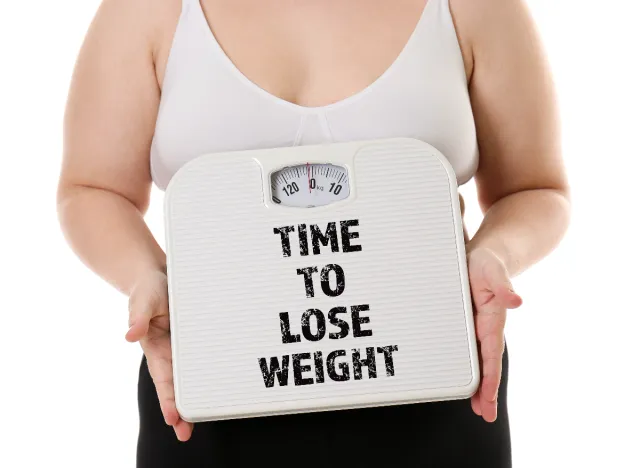Weight can be a matter of choice. If you’re not happy when you step on the scale, you can choose to make some changes in your diet and form. But dropping some pounds is not always an option, as being overweight can compromise your health and wellness. It’s not always easy to know the warning signs, so we’re here today with five telltale signs you need to lose weight, doctor’s orders!
We spoke with Mike Bohl, MD, MPH, ALM, the Director of Medical Content & Education at Ro and a member of our Medical Expert Board, who explains, “The driving force behind losing weight is based on physical appearance, and people use what they look like in the mirror or how well their clothing fits to determine if it’s time to start losing weight. But having excess weight is also a risk factor for many diseases.”
Medically, there are several warning signs that are telling you it’s time to shed some pounds. Your physician will be helpful, and it’s important to keep up with your physical exams. Knowing dangerous symptoms can be helpful in noticing problems before they escalate. Keep reading to learn the telltale signs you need to lose weight, according to an MD. And next up, check out 5 Easy Daily Habits To Cut Calories and Lose Weight, Expert Says.


One of the most commonly endured chronic diseases of individuals who are overweight is high blood pressure. This condition puts you at risk for stroke, heart disease, kidney disease, and more.
Dr. Bohl tells us, “While there are many medications you can take to treat high blood pressure, one of the most important things to do to manage it is to lose weight. So, if your healthcare provider tells you that your blood pressure is going up (or if you check it on your own and notice it’s regularly high), it’s time to start dieting and getting more exercise.”


Another reason why consistent physical exams are important is that your physician can determine if you require blood work that can indicate pre-diabetes, diabetes, and high cholesterol. Diabetes and high cholesterol are serious chronic illnesses that can cause damage to your kidneys, nerves, and eyes, along with blood and heart vessel disease and more. The good news is, both health conditions can be managed efficiently, at least partially, by dropping excess pounds.
“If your healthcare provider tells you that your cholesterol is high or that you have diabetes or pre-diabetes, it’s time to lose weight,” Dr. Bohl informs us.
READ RELATED: 5 Best Running Tips for Weight Loss, Expert Says


According to Dr. Bohl, “Sleep apnea is a medical condition characterized by disrupted breathing during sleep, and one of the biggest risk factors is excess weight. Sleep apnea can make it so sleep isn’t restful, leading to daytime fatigue and also increasing the risk of chronic diseases like high blood pressure and diabetes.” So if you’re sawing wood at night while you sleep, it’s something to be cautious of.


Dr. Bohl points out, “Having excess weight—by definition—makes you heavier, which puts more strain on the body. There’s more pressure on the joints and spine, and your muscles need to work harder to maintain your posture and move your body around. As a result, excess weight can lead to pain, whether it’s pain in the knees, the lower back, or elsewhere. Any new-onset pain that you’re unsure about should be discussed with your healthcare provider, but if the two of you think it might be related to your weight, it’s time to shed some pounds.”


When you’re used to performing certain tasks each day and suddenly find it more challenging to accomplish them, there may be something awry with your body.
Dr. Bohl warns, “If you find that it’s becoming more difficult to walk long distances or go up the stairs without becoming short of breath, it’s time to figure out if excess weight is the cause.”


Now that you know the red flags that you have to reverse that scale a bit, we’re here to share some effective ways you can kickstart the process. Making a 360-degree change when it comes to weight loss by starting a diet or working out aggressively every day can be difficult, so start with smaller changes.
Dr. Bohl suggests, “As you’re trying to figure out how to fit these things into your everyday life, there are smaller steps you can take toward losing weight first. For example, one of the ways you burn calories throughout the day is by what’s called non-exercise activity thermogenesis, or NEAT. NEAT refers to all of the energy your body burns to accomplish everyday tasks, like walking, cleaning, doing yard work, and even typing. And there are lots of easy ways to boost your NEAT.”
Some examples are parking further from the store when you’re out for errands, so you have to walk further. Choose the stairs instead of the elevator. If your workday involves sitting at a desk for most of the day, stand for a good amount of the time you’re working. Also, when on a phone call, walk while you talk instead of staying seated. None of these tasks will burn much of a difference each day, but when you make the changes consistent, they will all add up. Bumping up NEAT can be quite beneficial in your journey to lose weight.
Source:









